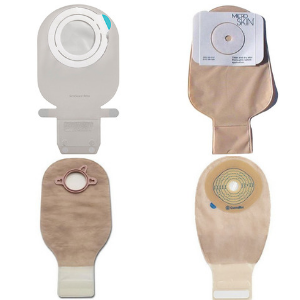Ostomy bags exist in a variety of sorts, designs, and dimensions, and while personal choice is typically the deciding factor, it's still critical to know the benefits and drawbacks of each ostomy bag form. A small, watertight bag called an ostomy bag is used to remove the contaminants from the urinary or digestive systems. The biological excrement travels through the stoma and into the pouch of the ostomy following ostomy operation. Ostomy pouches are generally carried on the outside of the person and can be readily concealed under garments. Stool, urine, or gas will not seep out if you use the right ostomy bag.
Many people with illnesses such intestinal injuries or obstructions, ulcerative colitis, Crohn's disease, and abdominal/pelvic cancers require ostomy pouches. For the treatment of some disorders affecting the large intestine, waste diversion through a stoma may be required. The ostomy bag is a bag that is attached to the stoma and used to collect body waste. Because the ostomy lacks muscle, it necessitates the use of a bag to regulate the flow of air and solids from the stomach.
Colostomy Bags
When a section of the abdomen needs to recover after surgery or damage, a temporary colostomy may be utilized. When the colostomy isn't changed, the pouch serves as a synthetic valve for the intestine. A colostomy is a hole in the abdomen made from a section of the large intestine. It is usually located on the left side. Because the stoma output is mostly hard, formed feces, some patients prefer a closed bag. During the day, a closed ostomy pouch can be completely overhauled. However, in other persons, the discharge is more liquid.
Ileostomy Bags
An ileostomy is created when the small intestine is diverted through a stoma in the abdomen. The right side of the stomach is usually where an ileostomy bag is put. Stoma discharge is loose and should be discarded several times throughout the day. For daily tasks, most persons with ileostomies choose a drainable ostomy bag.
Urostomy Bags
A urostomy is established when a piece of the small intestine diverts urine from the ureters through the stoma. The bladder is either removed or bypassed altogether. The urostomy pouch is frequently seen on the right side of the stomach, and the stoma outflow is urine. For persons with urostomies, a drain spout linked to the ostomy bag is a good solution because the outflow is liquid.
Ostomy pouches are available in a wide range of sizes. There are two types of appliances, however: two-piece or a one-piece variety. A wafer and a pouch are usually included in one-piece systems. The pouch and the wafer are usually distinct in two-piece systems.
In a one-piece ostomy system, the ostomy sack and skin barrier are connected. With each ostomy bag replacement, the ostomy wafer must be replaced. A one-piece ostomy bag might cause skin irritation in certain people due to the frequent changes in the appliance. While you are using a one-piece option, the pouch must be positioned correctly to avoid leaks.


Comments
Post a Comment